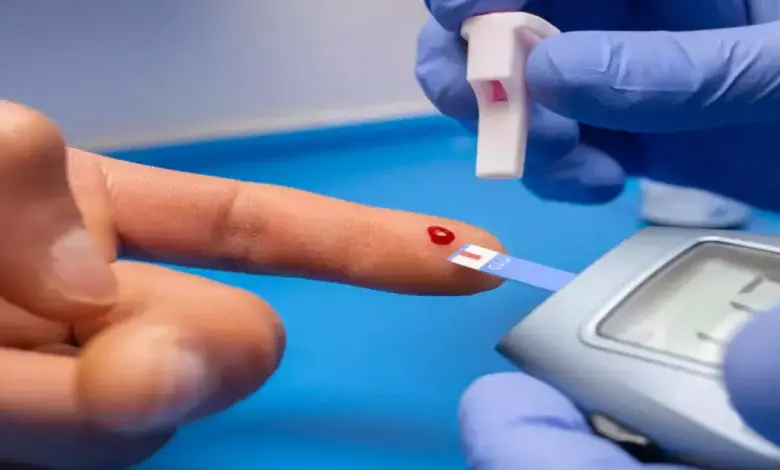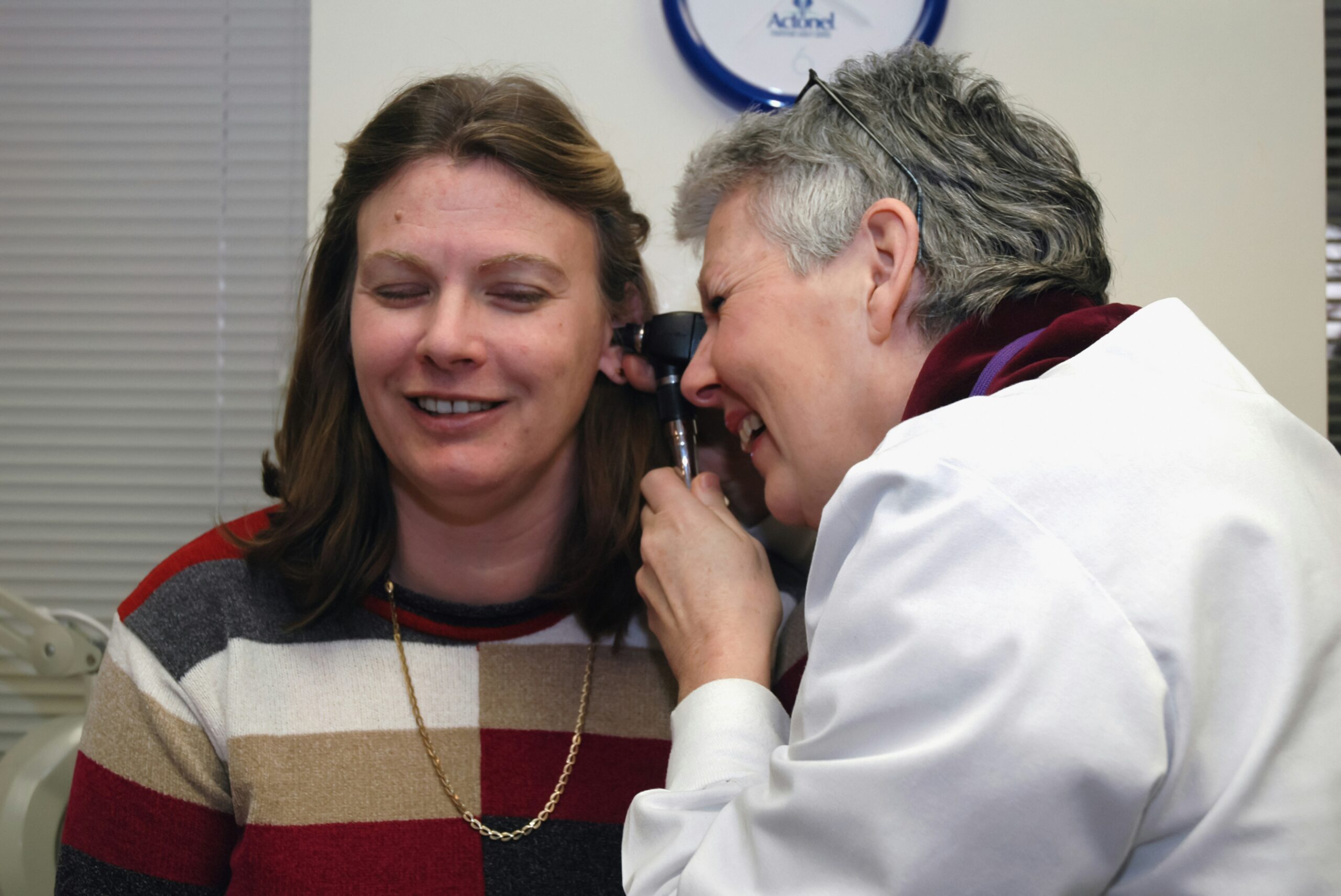9 Ways to Control High Blood Sugar Levels Naturally (Try Tonight)

Diabetes and prediabetes are linked to High Blood Sugar, also known as hyperglycemia. When your blood sugar is high but not high enough to be classified as diabetes, you have prediabetes.
Normally, your body manages blood sugar levels by producing insulin, a hormone that allows your cells to use the sugar in your blood. As a result, insulin is the most important blood sugar regulator.
However, a variety of factors can impair blood sugar control and result in hyperglycemia.
Internal causes of high blood sugar include your liver producing too much glucose, your body producing insufficient insulin, or your body’s inability to effectively use insulin. Insulin resistance is the term for the latter.
Dietary choices, certain medications, a sedentary lifestyle, and stress are all external factors.
According to the Centers for Disease Control (CDC), 13% of adults in the United States have diabetes, and 34.5 percent have prediabetes. This means that nearly half of all adults in the United States have diabetes or prediabetes.
Blood sugar management is especially important for diabetics because chronically high blood sugar levels can cause limb and life-threatening complications.
Here are 9 easy and scientifically proven ways to control high blood sugar levels naturally.
1. Manage Stress Levels
Blood sugar levels can be affected by stress.
When you are stressed, your body produces hormones called glucagon and cortisol, which raise your blood sugar levels.
One study involving a group of students found that exercise, relaxation, and meditation significantly reduced stress and lowers blood sugar levels naturally.
Yoga and mindfulness-based stress exercises may also help in the correction of insulin secretion problems in people with chronic diabetes.
SUMMARY
Managing your stress levels through exercise or relaxation techniques such as yoga may help control blood sugar levels naturally.
2. Control your carbohydrate intake
Your carbohydrate intake has a significant impact on your blood sugar levels.
Carbohydrates are broken down by your body into sugars, primarily glucose. Then, insulin assists your body in utilizing and storing it for energy.
When you consume too many carbohydrates or have insulin-function issues, this process fails and blood glucose levels rise.
As a result, the American Diabetes Association (ADA) recommends that people with diabetes manage their carb intake by counting carbs and understanding how many they require.
According to some studies, this can help you plan your meals more effectively, thereby improving blood sugar management.
Many studies also show that eating a low carb diet helps reduce blood sugar levels and prevents high blood sugar levels.
It’s important to understand that low carb diets and no carb diets are not the same things.
You can still eat carbs while keeping your blood sugar levels under control. Prioritizing whole grains over processed
SUMMARY
Your body converts the carbohydrates you eat into glucose, which raises your blood sugar levels. As a result, lowering your carbohydrate intake can help with blood sugar regulation.
3. Drink plenty of water to stay hydrated
Drinking plenty of water may help you maintain healthy blood sugar levels.
It not only prevents dehydration but also aids your kidneys in flushing out any excess sugar through urine.
According to one meta-analysis of observational studies, those who drank more water had a lower risk of developing high blood sugar levels.
Drinking water on a regular basis may help to rehydrate the blood, lower blood sugar levels, and lower the risk of diabetes.
Keep in mind that water and other zero-calorie beverages are the best options. Avoid sugar-sweetened options, as they can raise blood glucose levels, cause weight gain, and increase the risk of diabetes.
SUMMARY
Staying hydrated can help lower blood sugar levels and reduce the risk of developing diabetes. Choose water and zero-calorie drinks over sugar-sweetened beverages.
4. Choose foods that have a low glycemic index
The glycemic index (GI) measures how quickly carbs break down during digestion and how quickly they are absorbed by your body. This influences the rate at which your blood sugar levels rise.
The GI classifies foods as low, medium, or high GI and ranks them from 0 to 100. Foods with a GI of 55 or less are considered low GI.
The amount and type of carbs you consume both influences how food affects your blood sugar levels. Eating low GI foods, in particular, has been shown to lower blood sugar levels in diabetics.
Some foods with a low to moderate GI are as follows:
- beans
- bulgur
- barley
- oatmeal
- peanuts
- whole wheat pasta
- non-starchy veggies
- unsweetened Greek yogurt
Furthermore, adding protein or healthy fats also helps to reduce blood sugar spikes after meals.
SUMMARY
Choose foods with a low glycemic index (GI) and keep track of your total carbohydrate intake.
5. Get enough good sleep
Getting enough sleep feels great and is essential for good health.
In fact, a lack of sleep and a lack of rest can affect blood sugar levels and insulin sensitivity, increasing the risk of developing type 2 diabetes. They can also cause an increase in appetite and weight gain.
Furthermore, sleep deprivation raises cortisol levels, which, as previously stated, play an important role in blood sugar management.
A good night’s sleep is defined by both quantity and quality. Adults should get 7–8 hours of high-quality sleep per night, according to the National Sleep Foundation.
Try the following to improve the quality of your sleep:
- stick to a sleep schedule
- avoid caffeine and alcohol
- exercise on a regular basis
- avoid screen time before night
- develop a sleep routine
- avoid working late nights
- meditate daily
SUMMARY
A good night’s sleep helps you maintain a healthy weight and blood sugar levels. Poor sleep, on the other hand, can cause critical metabolic hormones to be disrupted.
6. Consume healthy snacks on a regular basis
Spreading out your meals and snacks throughout the day may help you avoid both high and low blood sugar levels.
Snacking between meals may also lower your risk of type 2 diabetes.
In fact, several studies suggest that eating smaller, more frequent meals throughout the day may improve insulin sensitivity and lower blood sugar levels.
Furthermore, eating smaller meals and healthy snacks throughout the day may lower glycated hemoglobin (HbA1c) readings, indicating improvements in blood sugar levels over the previous three months.
If you’re not sure what to eat between meals and if you have diabetes, read this article (21 Best Snack Ideas If You Have Diabetes
SUMMARY
Snacking between meals can help keep your blood sugar levels from rising or falling throughout the day.
7. Consume more fibre
Fiber promotes a more gradual rise in blood sugar levels by slowing carb digestion and sugar absorption.
Fiber is classified into two types: insoluble and soluble.
While both are important, soluble fibre has been explicitly shown to improve blood sugar management, whereas insoluble fibre has not.
A high fibre diet can help your body regulate blood sugar and prevent blood sugar lows. This could help you manage type 1 diabetes better.
The top 5 Fibre rich foods include:
- fruits
- vegetables
- whole grains
- legumes
- peanut
The daily fibre recommendation for women is 25 grams, and for men, it is 35 grams. This means approximately 14 grams per 1,000 calories.
SUMMARY
Eating plenty of fibre can help with blood sugar control. In this regard, soluble dietary fibre appears to be more effective than insoluble fibre.
8. Exercise on a regular basis
Regular exercise can help you achieve and maintain a healthy weight while also increasing insulin sensitivity.
Increased insulin sensitivity means that your cells can use the available sugar in your bloodstream more efficiently.
Exercise also aids in the utilization of blood sugar for energy and muscle contraction.
If you have trouble managing your blood sugar, consider checking your levels before and after exercising on a regular basis. This will help you learn how your body reacts to various activities and keep your blood sugar levels from becoming too high or low.
Furthermore, researchers advise doing “exercise snacks” to lower blood sugar and prevent the damage that sitting all day can cause.
Simply breaking up your sitting time every 30 minutes for a few minutes throughout the day is what exercise snacks entail. Light walking or simple resistance exercises such as squats or leg raises are some of the exercises recommended.
Weightlifting, brisk walking, running, biking, dancing, hiking, swimming, and other forms of exercise can also be beneficial. In fact, any activity that gets you up and moving on a regular basis, regardless of intensity, is preferable to a sedentary lifestyle.
Furthermore, if you find it difficult to devote longer periods of time to exercise throughout the week, you can still reap many benefits by doing shorter sessions. For example, set a goal of 150 minutes per week and aim for 10-minute exercise sessions three times a day for five days.
SUMMARY
Exercise boosts insulin sensitivity and allows your muscles to use blood sugar to move. This can result in lower blood sugar levels.
9. Keep track of your blood sugar levels
Tracking your blood glucose levels can help you manage them more effectively.
You can do this at home with a glucometer, which is a portable blood glucose meter. You should talk to your doctor about this option.
Keeping track allows you to determine whether your meals or medications need to be adjusted. It also teaches you how your body reacts to different foods.
Try measuring your levels on a daily basis and keeping a log of the results. It may also be more beneficial to track your blood sugar in pairs, such as before and after exercise or before and 2 hours after a meal.
This can show you whether you need to make minor changes to a meal if it causes blood sugar spikes, rather than avoiding your favorite foods entirely. Some modifications include substituting a starchy side for non-starchy vegetables or limiting them to a handful.
SUMMARY
Checking your blood glucose levels and keeping a daily report allow you to make adjustments to your diet and modification as needed to better manage your blood sugar levels.
Conclusion
There are numerous natural ways to control your blood sugar levels.
Making lifestyle changes, such as managing your weight, stress levels, sleep quality, exercising, and staying hydrated, is one of them. Having said that, some of the most significant improvements are related to your dietary choices.
Before making any lifestyle changes or trying new supplements, consult with your doctor, especially if you have blood sugar issues or are taking medications.






This was beautiful Admin. Thank you for your reflections.
naturally like your web site